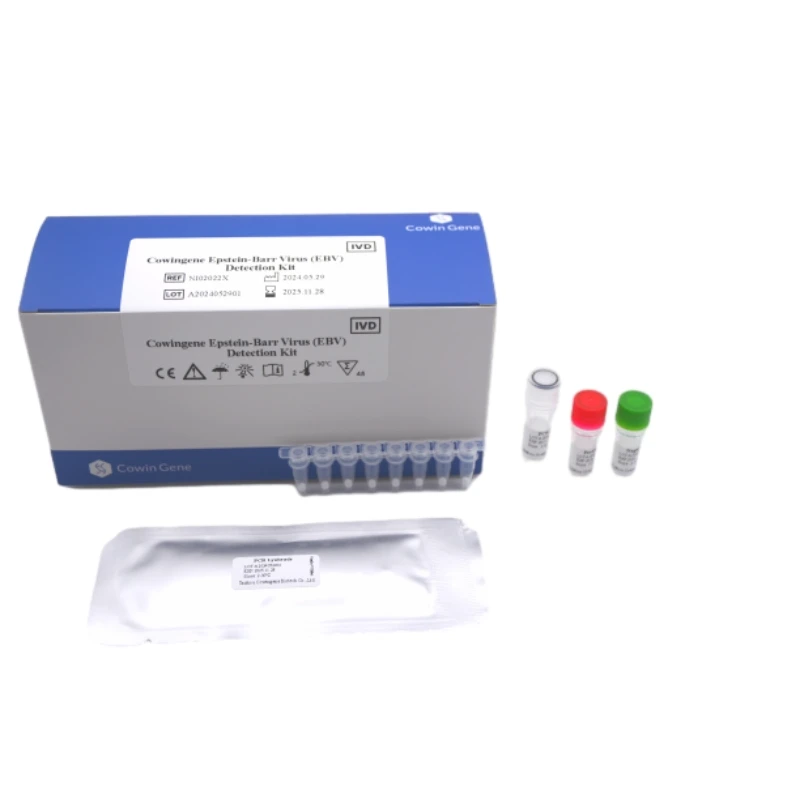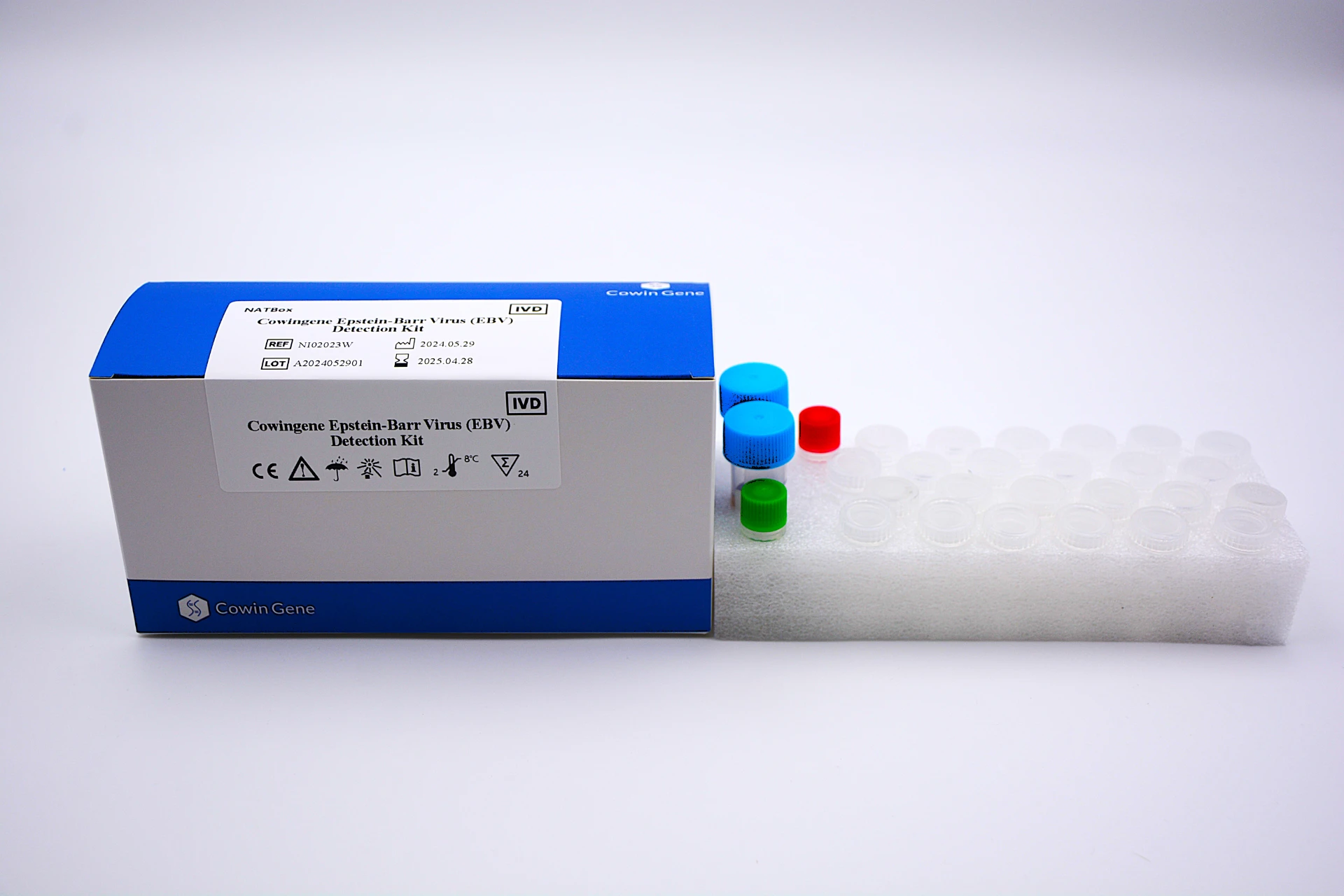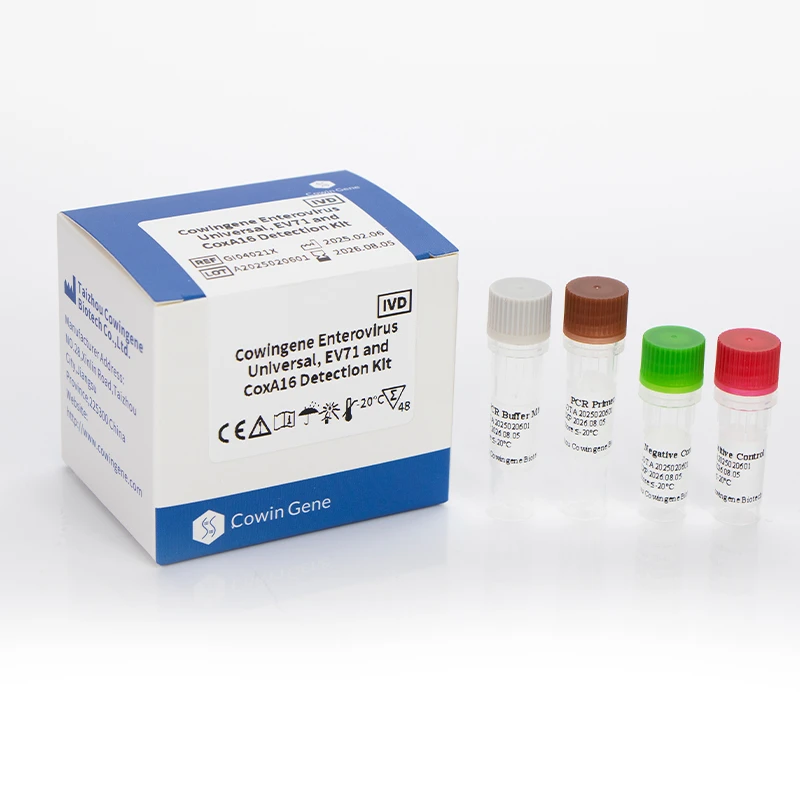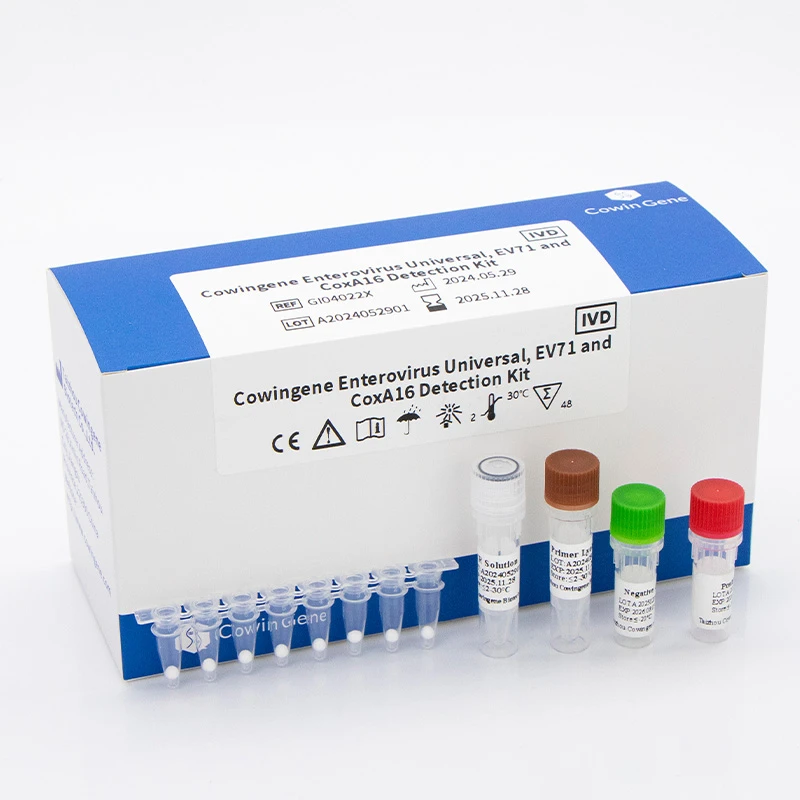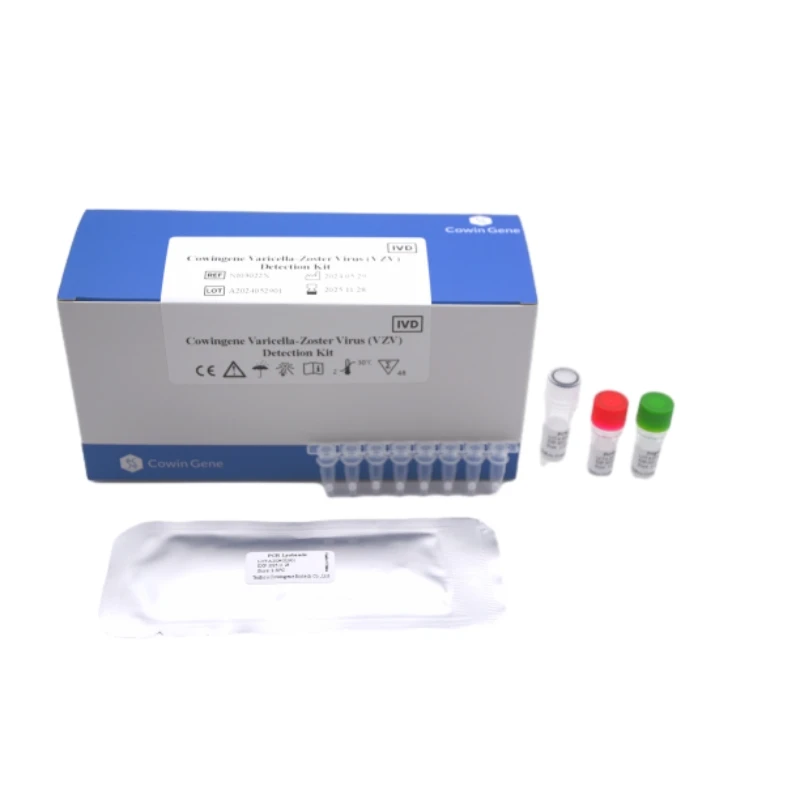Sep . 14, 2025 10:40 Back to list
Respiratory Pathogen PCR: Rapid & Accurate Diagnostic Panels
The Evolving Landscape of Respiratory Pathogen Diagnostics
The precise and rapid identification of respiratory pathogens is paramount for effective patient management, infection control, and public health surveillance. Traditional diagnostic methods, while foundational, often present limitations in terms of turnaround time and multiplexing capabilities. The advent of advanced molecular diagnostics, particularly the respiratory pathogen pcr test, has revolutionized this field, offering unprecedented speed and accuracy in detecting a broad spectrum of viral and bacterial agents responsible for respiratory infections.
Industry trends indicate a significant shift towards integrated, high-throughput solutions capable of simultaneously identifying multiple pathogens from a single clinical sample. This demand is driven by several factors, including the increasing complexity of respiratory disease presentations, the need for differential diagnosis between clinically similar infections (e.g., influenza vs. SARS-CoV-2), and the global imperative to manage antimicrobial resistance effectively. Molecular assays, such as those employing a multiplex respiratory panel, are becoming the standard of care in acute settings, enabling clinicians to make informed decisions swiftly, optimize treatment strategies, and reduce the burden on healthcare systems.
Technical Specifications: Cowingene Respiratory Pathogen Panel 15 Detection Kit
The Cowingene Respiratory Pathogen Panel 15 Detection Kit exemplifies the pinnacle of current molecular diagnostic capabilities for respiratory infections. This advanced respiratory PCR panel offers simultaneous qualitative detection and identification of 15 common respiratory pathogens, providing a comprehensive diagnostic solution.
Product Specification Table: Cowingene Respiratory Pathogen Panel 15 Detection Kit
| Feature | Specification |
|---|---|
| Detection Method | Real-time Reverse Transcription Polymerase Chain Reaction (RT-PCR) |
| Target Pathogens (15) | Influenza A Virus (Flu A), Influenza B Virus (Flu B), Respiratory Syncytial Virus (RSV), Adenovirus (ADV), Human Metapneumovirus (hMPV), Parainfluenza Virus (PIV1, PIV2, PIV3, PIV4), Rhinovirus (HRV), SARS-CoV-2, Mycoplasma pneumoniae, Chlamydophila pneumoniae, Legionella pneumophila |
| Sample Type | Nasopharyngeal swabs, Oropharyngeal swabs, Sputum, Bronchoalveolar lavage fluid (BALF) |
| Limit of Detection (LoD) | Typically < 100 copies/mL for most targets (pathogen-specific) |
| Turnaround Time | Approx. 1.5 - 2 hours from RNA extraction to result (instrument dependent) |
| Specificity | > 98% for all targets (evaluated against common co-circulating pathogens and commensals) |
| Sensitivity | > 95% for all targets (evaluated against clinical samples) |
| Internal Control | Included, to monitor extraction and amplification efficiency |
| Shelf Life | 12 months from manufacturing date (stored at -20°C) |
| Regulatory Status | CE-IVD marked (check local regulations for availability) |
The kit's design emphasizes high analytical sensitivity and specificity, critical for detecting low viral loads and differentiating between closely related pathogens. The inclusion of an internal control ensures assay validity, mitigating false negatives due to poor sample quality or inhibition.
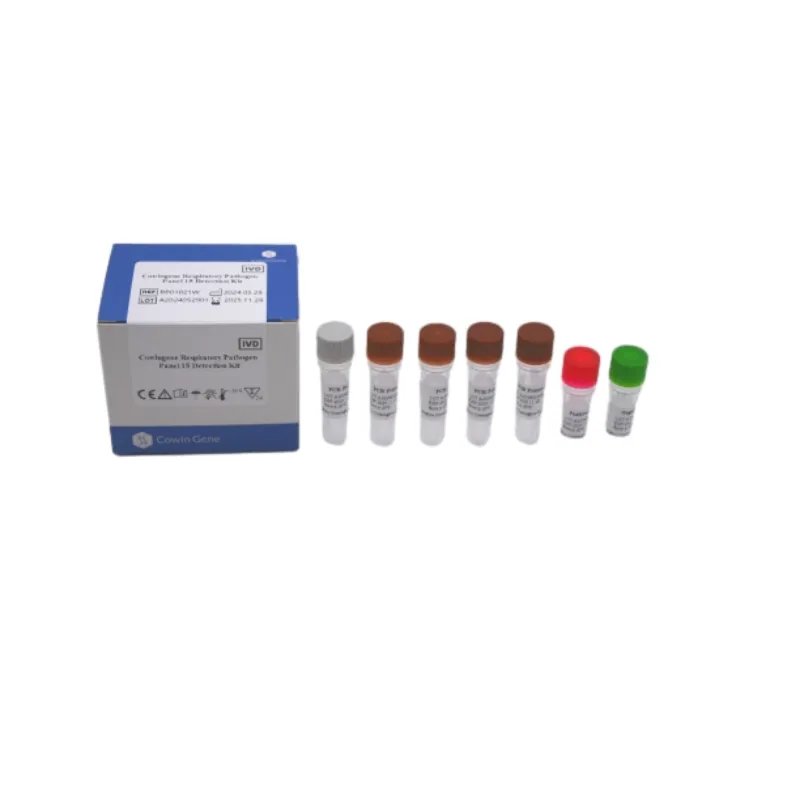
Process Flow of Respiratory Pathogen PCR Testing
The diagnostic process for detecting respiratory pathogens using PCR is a meticulously controlled workflow designed to ensure accuracy and reliability. This multi-step process, from sample collection to result interpretation, is crucial for obtaining dependable diagnostic outcomes.
Schematic Steps for a Multiplex Respiratory Panel PCR Assay:
- Sample Collection & Transport:
Clinical samples (e.g., nasopharyngeal swabs, sputum, BALF) are collected from patients using sterile techniques and appropriate transport media. Proper collection ensures sufficient pathogen load and preserves RNA/DNA integrity. Transport protocols adhere to biosafety standards, maintaining sample viability for nucleic acid extraction.
- Nucleic Acid Extraction:
Viral RNA and bacterial DNA are extracted from the clinical sample. This critical step purifies the target nucleic acids while removing inhibitors that could interfere with PCR amplification. Automated extraction systems are commonly used to ensure high yield, reproducibility, and reduce hands-on time, adhering to standards like ISO 13485 for medical device manufacturing where applicable to the extraction kits themselves.
- Reverse Transcription (for RNA viruses):
For RNA viruses, extracted RNA is reverse transcribed into complementary DNA (cDNA) using a reverse transcriptase enzyme. This cDNA then serves as the template for subsequent PCR amplification.
- PCR Amplification & Detection:
The cDNA (or DNA for bacterial targets) is then subjected to real-time PCR using specific primers and fluorescent probes designed to target unique sequences of each respiratory pathogen. The Cowingene kit employs highly specific probes to detect 15 different pathogens simultaneously in a single reaction well. The amplification curve (Ct value) is monitored in real-time. This process occurs in certified PCR instruments meeting national and international performance standards.
Simple HTML Representation of Process:
Sample → Extraction → RT (for RNA) → PCR Amplification → Data Analysis → Result(Materials: Diagnostic kits, reagents. Manufacturing Process for kits: GMP-certified component synthesis and assembly. Testing Standards: ISO 13485 for kit production, internal QC, external validation. Service Life: Kit reagents have defined shelf life; instrument calibration service life.)
- Data Analysis & Interpretation:
Specialized software analyzes the real-time fluorescence data. A positive result is indicated by a characteristic amplification curve crossing a defined threshold (Ct value), while the melting curve analysis or specific probe signals identify the particular pathogen. Internal controls ensure assay validity for each sample.
- Reporting:
Final results are generated and reported to clinicians, typically within 2-3 hours of sample reception in the lab. This rapid turnaround is critical for informing patient treatment decisions.
The service life of a respiratory pathogen PCR kit refers to its validated shelf life under specified storage conditions, typically 12-18 months. Instruments used for PCR require regular calibration and maintenance to ensure optimal performance over their operational lifespan, usually several years. Target industries for this technology are primarily healthcare (hospitals, reference labs, urgent care), public health surveillance, and research institutions. The advantages in typical application scenarios include rapid diagnosis leading to targeted antiviral/antibiotic therapy, reduced hospital stays, and efficient outbreak management.
Application Scenarios and Technical Advantages
The versatility of respiratory pathogen PCR extends across numerous clinical and public health domains. Key application scenarios include:
- Acute Respiratory Infection (ARI) Diagnosis: Rapidly differentiates between viral and bacterial causes of ARI, guiding appropriate antimicrobial stewardship. This is particularly crucial in pediatric and elderly populations where respiratory infections can be severe.
- Outbreak Management: Essential for identifying the causative agent during seasonal outbreaks (e.g., influenza, RSV) and emerging pandemic threats (e.g., SARS-CoV-2), facilitating timely public health interventions.
- Immunocompromised Patients: Critical for prompt and accurate diagnosis in patients with weakened immune systems, where even common pathogens can lead to life-threatening complications.
- Hospital-Acquired Infection (HAI) Surveillance: Helps in tracking and preventing the spread of respiratory pathogens within healthcare facilities.
- Differential Diagnosis: Distinguishes between respiratory infections that present with similar symptoms but require different clinical management, such as influenza versus a bacterial pneumonia.
The technical advantages of a multiplex respiratory panel are substantial:
- High Sensitivity and Specificity: Molecular detection targets specific nucleic acid sequences, offering superior analytical performance compared to culture or antigen-based tests. This minimizes false negatives and false positives.
- Rapid Turnaround Time: Provides results in hours, not days, enabling faster clinical decisions and potentially reducing the duration of hospitalization.
- Multiplexing Capability: Detects multiple pathogens simultaneously from a single sample, saving time, reagents, and patient sample volume. This is highly efficient and cost-effective compared to running individual tests for each pathogen.
- Early Detection: Can detect pathogens at very low viral/bacterial loads, often before symptoms are severe or when other tests might yield negative results.
- Improved Patient Outcomes: Facilitates targeted therapy, reduces unnecessary antibiotic use, and improves infection control measures, directly impacting patient health.
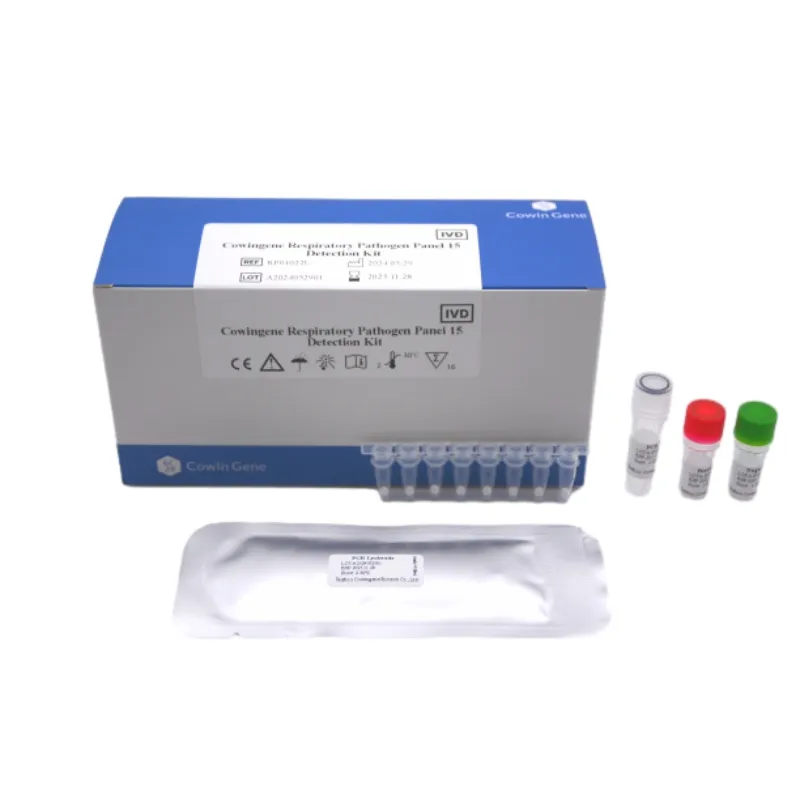
Vendor Comparison & Customized Solutions
When evaluating vendors for respiratory PCR panel solutions, several factors are critical for B2B decision-makers. While specific competitor names are not included, the Cowingene Respiratory Pathogen Panel 15 Detection Kit stands out due to its comprehensive target list, robust performance metrics, and commitment to quality.
Key Comparison Criteria for Respiratory PCR Panels:
| Criterion | Typical Offerings | Cowingene Differentiator |
|---|---|---|
| Number of Pathogens | Varies, typically 5-20 targets | Comprehensive 15 targets, balancing coverage with efficiency. |
| Assay Format | Open systems, closed systems, cartridge-based | Open system compatible with standard qPCR instruments, offering flexibility. |
| Turnaround Time (TAT) | 2-4 hours for most multiplex panels | Optimized for ~1.5-2 hour TAT from extraction, critical for rapid patient management. |
| Regulatory Approvals | CE-IVD, FDA EUA/510(k) depending on region | CE-IVD marked, ensuring compliance with European directives for diagnostics. |
| Cost-Effectiveness | Varies by panel size, throughput, and vendor | Competitive pricing structure offering high value for extensive pathogen coverage. |
| Support & Training | Varies, from online resources to on-site training | Dedicated technical support and comprehensive training resources. |
Cowingene also offers flexible and customized solutions to meet specific laboratory needs. For high-throughput laboratories or specialized research facilities, panels can be adapted for certain pathogen combinations or integrated with existing automation platforms. This includes:
- Panel Customization: Tailoring the target pathogen list for regional prevalence or specific clinical interests, subject to feasibility and validation.
- Integration Services: Assisting with the seamless integration of our kits into existing laboratory information systems (LIMS) and automated liquid handling platforms to streamline workflow.
- Bulk and OEM Supply: Providing bulk quantities or original equipment manufacturer (OEM) solutions for partners looking to incorporate Cowingene technology under their own branding.
Our commitment to collaborative development ensures that our respiratory pathogen PCR solutions evolve with the dynamic needs of the diagnostic landscape.
Application Case Studies & Client Success
The practical impact of advanced respiratory PCR panel technology is best illustrated through real-world applications and the feedback from our partners. Cowingene has a track record of providing reliable diagnostic solutions that enhance patient care and operational efficiency.
Case Study 1: Enhanced Outbreak Response in a Regional Hospital
A prominent regional hospital faced challenges during a severe winter respiratory season, with an overwhelming influx of patients presenting with undifferentiated ARI symptoms. Traditional viral culture and single-target PCR assays were slow and resource-intensive, leading to delayed diagnoses and inefficient cohorting. Implementing the Cowingene Respiratory Pathogen Panel 15 Detection Kit allowed the hospital to:
- Achieve a diagnostic turnaround time of under 3 hours for most samples.
- Accurately identify co-infections, which comprised 15% of positive cases.
- Optimize bed allocation and isolation protocols, significantly reducing the spread of hospital-acquired respiratory infections by 25%.
- Reduce empirical antibiotic prescriptions by 30%, promoting antimicrobial stewardship.
The swift and comprehensive diagnostics provided by our multiplex respiratory panel proved instrumental in managing the seasonal surge effectively.
Case Study 2: Public Health Surveillance in an Urban Community
A public health laboratory responsible for syndromic surveillance across a major urban area adopted the Cowingene respiratory pathogen PCR kit to enhance their monitoring capabilities. Prior to this, their surveillance relied on a limited panel of tests and often required sending samples to reference labs, delaying critical insights. With Cowingene's solution, they were able to:
- Rapidly detect and track the prevalence of 15 key respiratory pathogens, including emerging strains.
- Identify an unexpected cluster of Parainfluenza Virus 3 (PIV3) cases, enabling early public health advisories.
- Provide real-time data to local health authorities, supporting evidence-based policy decisions.
- Improve the efficiency of their laboratory operations, processing a larger volume of samples with existing staff.
These case studies underscore the critical role of robust and comprehensive respiratory pathogen PCR solutions in both clinical diagnostics and public health. Our certifications (e.g., ISO 13485 for quality management systems) and positive client testimonials reflect our commitment to delivering authoritative and trustworthy diagnostic tools.
Frequently Asked Questions (FAQ)
What is the typical lead time for ordering the Cowingene Respiratory Pathogen Panel 15 Detection Kit?
Standard lead time for most orders is 3-5 business days after order confirmation, depending on quantity and shipping destination. For large volume or customized orders, specific timelines will be provided upon inquiry.
What kind of warranty does Cowingene offer on its diagnostic kits?
Cowingene guarantees the quality and performance of its Respiratory Pathogen Panel 15 Detection Kit for its stated shelf life, provided it is stored and used according to the provided instructions for use (IFU). Any performance issues or defects will be addressed through our customer support channels.
What kind of customer support and after-sales service does Cowingene provide?
We offer comprehensive technical support including instrument setup guidance, assay troubleshooting, and data interpretation assistance. Our dedicated support team is available via email and phone during business hours. We also provide on-site training and workshops for new installations or complex applications as needed.
Is the Cowingene panel compatible with automated systems?
Yes, the Cowingene Respiratory Pathogen Panel 15 Detection Kit is designed to be compatible with various open-system real-time PCR instruments. While nucleic acid extraction can be manual, it is also validated for use with several automated extraction platforms, allowing for integration into high-throughput laboratory workflows.
Conclusion
The demand for accurate, rapid, and comprehensive diagnostic tools for respiratory pathogens continues to grow. The Cowingene Respiratory Pathogen Panel 15 Detection Kit offers a robust and reliable solution for clinical laboratories and public health agencies, embodying the latest advancements in respiratory pathogen PCR technology. By providing unparalleled sensitivity, specificity, and multiplexing capabilities, it empowers healthcare professionals to make timely, informed decisions, ultimately leading to improved patient outcomes and more effective disease management.
References
- World Health Organization (WHO). WHO guidelines for the clinical management of severe acute respiratory infection (SARI) when COVID-19 disease is suspected. Available at: www.who.int
- Centers for Disease Control and Prevention (CDC). Respiratory Syncytial Virus (RSV) Information for Healthcare Professionals. Available at: www.cdc.gov
- European Centre for Disease Prevention and Control (ECDC). Guidance for diagnostic testing for SARS-CoV-2. Available at: www.ecdc.europa.eu
- Clinical and Laboratory Standards Institute (CLSI). Molecular Diagnostic Methods for Infectious Diseases. Available at: www.clsi.org
- Journal of Clinical Microbiology. Latest research on multiplex PCR assays for respiratory pathogens. Available at: jcm.asm.org
Related PRODUCTS
-
Understanding Monkeypox Testing PCR – Global Health & Diagnostic Insights
NewsNov.24,2025 -
Comprehensive Guide to Monkey Pox Detection: Methods, Applications & Innovations
NewsNov.23,2025 -
Essential Guide to Monkeypox Detection: Technologies, Applications & Future Trends
NewsNov.23,2025 -
Understanding Strep B Test Cost: Global Insights and Healthcare Impact
NewsNov.22,2025 -
Group B Strep DNA Test – Fast, Accurate Screening to Prevent Neonatal Infection
NewsNov.21,2025 -
Essential Guide to Group B Strep Test Kits: Benefits, Uses & Innovations
NewsNov.20,2025


